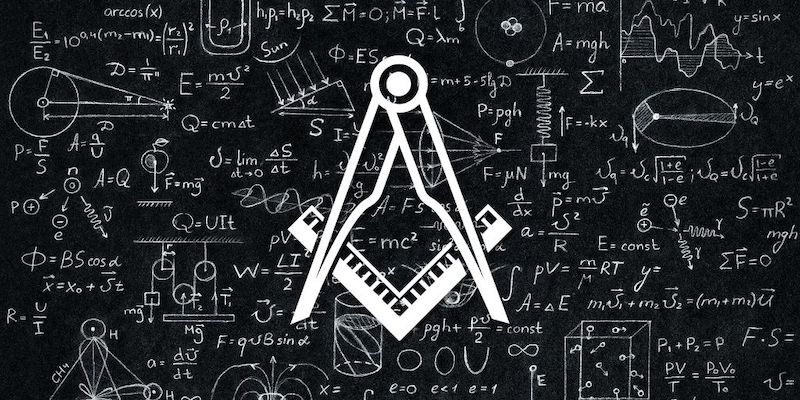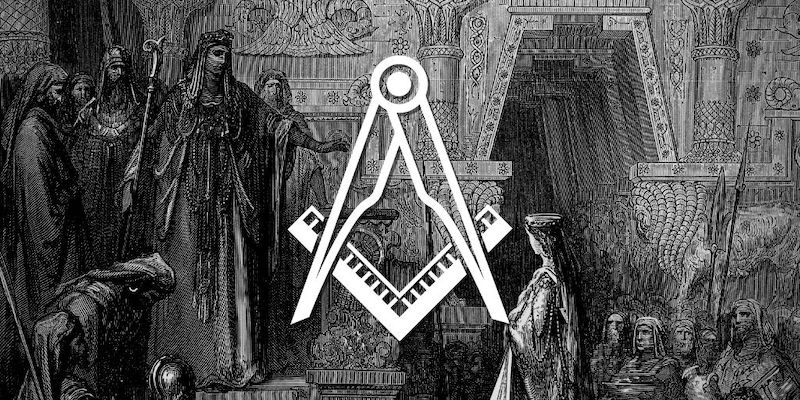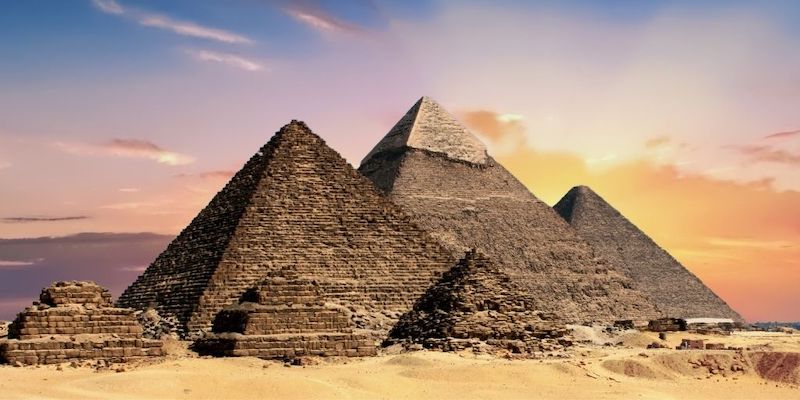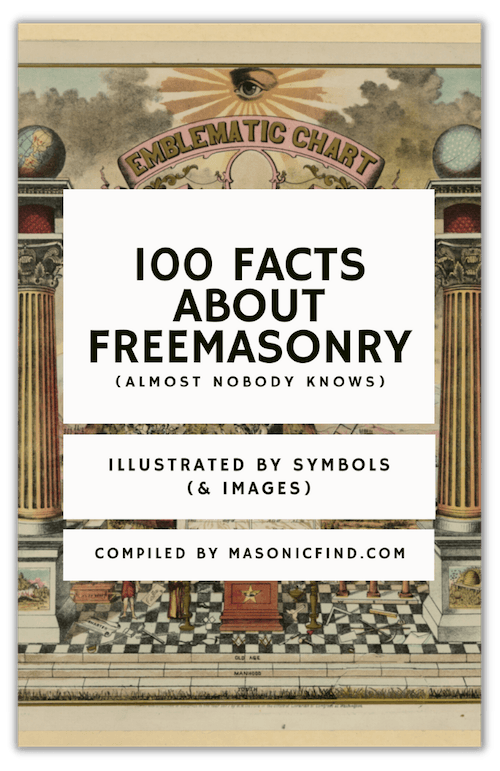Freemasons may be considered a secret society, but perhaps one of the most intriguing questions for Freemasons is the relationship between Freemasonry and mathematics.
So what is this connection?
This article explores these questions by looking at various examples in history where Freemasonry has been intertwined with mathematics.

The History of Mathematics In Freemasonry
The Freemasons is a “society with secrets” that has been shrouded in mystery for years.
Freemasons have always attempted to keep their rituals and practices secretive, only revealing small pieces of the big picture.
One example where Freemasonry influences mathematics can be seen through the degrees Freemasons go through as they progress from an entry-level candidate to being initiated into the Freemason’s society.
Freemasons work their way up the Freemason hierarchy by taking on additional responsibilities and reaching new levels of understanding before being granted each successive degree or level to achieve within Freemasonry.
Each degree offers Freemasons a deeper insight into the world around them in terms of spiritual thought and religious pursuits.
Scottish Rite Freemasons can progress through a total of 33 degrees over the course of their Masonic journey.
This level of advancement is representative of Freemason’s participation within mathematics, as they attempt to reach new levels and understandings in mathematical knowledge.
In addition to this Freemasons have been known throughout history for their contributions towards math and science discoveries with many famous scientists Freemasons.
Did The Freemasons Help With Mathematical Advancements?
One of the Freemasons who helped advance mathematics throughout time was Sir Issac Newton.
Newton is known for his work in developing theories and laws that ushered in a new age of scientific discovery.
His most notable contributions to science included law’s governing gravity, motion, and optics which are still taught today. In addition to this, he also helped develop calculus, a branch of mathematics that is still used in various fields today.
The Freemasons have been credited with advancing the field of mathematics by helping to spread information across other Freemason’s and therefore leading to new discoveries within math which they would not have had access to without being part of Freemasonry.
The Mathematics Involved In King Solomon’s Temple

One example of Freemasonry influencing mathematics is seen through King Solomon’s Temple located in Jerusalem (not confirmed) around 1000 B.C.
The temple was built using measurements that reflected Pythagorean triples (a set of three whole numbers), this discovery was later named “Solomon’s triangle“.
These sets of numbers were very important at the time because they helped advance geometry by allowing the Stonemasons (operative masons) to design buildings that took into consideration the golden ratio or what is commonly referred to as the divine proportion.
The ancient stonemasons’ use of mathematics, specifical geometry, can also be seen in another famous architectural work:
The Pyramids of Giza. These pyramids contains many features including measurements and alignments with celestial bodies all based on math formulas used within Freemasonry at this time period.

Famous Mathematicians Who Were Also Freemasons
Many Freemasons throughout history have made significant contributions to mathematics.
One example is Sir Isaac Newton, one of the most influential mathematicians and scientists who helped usher in a new age for science with his work on gravity laws and optics.
Newton was also credited with developing calculus which had an influence over many other mathematical advancements after him like integral calculus used by physicists today for various purposes concerning motion and energy amongst others.
Another famous Freemason mathematician would be Albert Einstein who’s theories about relativity advanced the way we understand our universe as well as how fast light can travel through space among other things that he contributed towards math within physics such as E=mc^² (energy equals mass times speed of light squared).
More recently Freemasons have also made advancements in many branches of mathematics including cryptography, statistics, and even were the first to implement “imaginary numbers” into math which is now widely used within science.
What Are The Sacred Numbers in Freemasonry?
These Freemasonic numbers include the three, five, and seven.
The number three is widely known as one of the most sacred Freemasonic numbers because it can be seen within many aspects of Freemasonry which includes their initiation ceremony.
The five represents growth within Freemasonry with its symbolism representing both mind, body, and spirit which all come together through Freemasonry’s principles that include charity, love for others, and brotherhood.
The number seven is also another Freemasonic sacred number and represents the Seven Liberal Arts which includes music, arithmetic, geometry, rhetoric, grammar, logic, and astronomy that Freemasons believe can be used to better understand God.

FREE DOWNLOAD: 100 FACTS ABOUT FREEMASONRY (ALMOST NOBODY KNOWS)
Join the 10,000+ Brethren from around the world inside our weekly Masonic newsletter and get our best selling ebook for free (usual value: $20).
Freemasonry has influenced not only mathematicians but also scientists throughout history with their contributions towards the field as well as through art like architecture.
Furthermore, these advances in math have had a huge impact over the years with Freemasons being credited as the first to use “imaginary numbers” which is now used by mathematicians and scientists in a variety of branches within math.
Many Freemasons throughout history have been famous for their contributions towards mathematics whether they were known during their lifetime or not, but Freemasonry still has an influence on modern math through various symbols that are recognized around Freemason’s today.